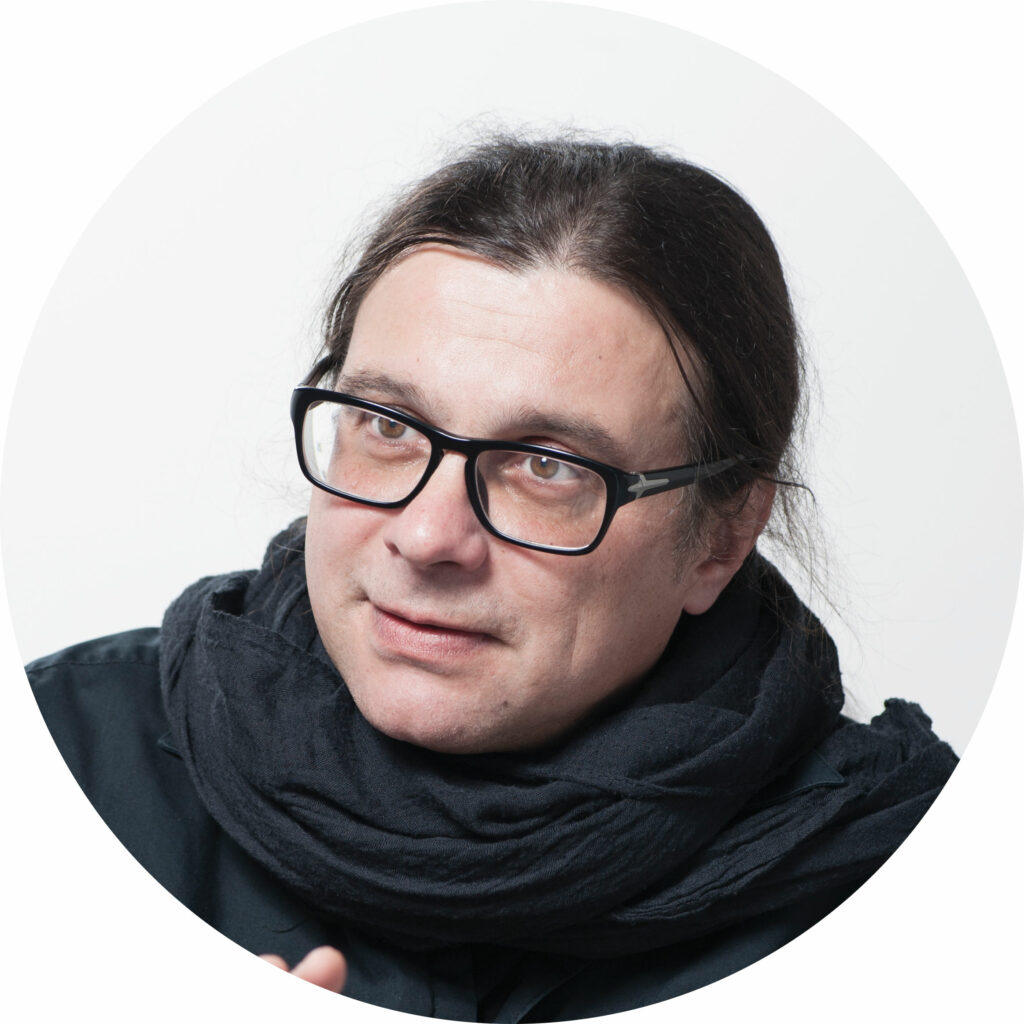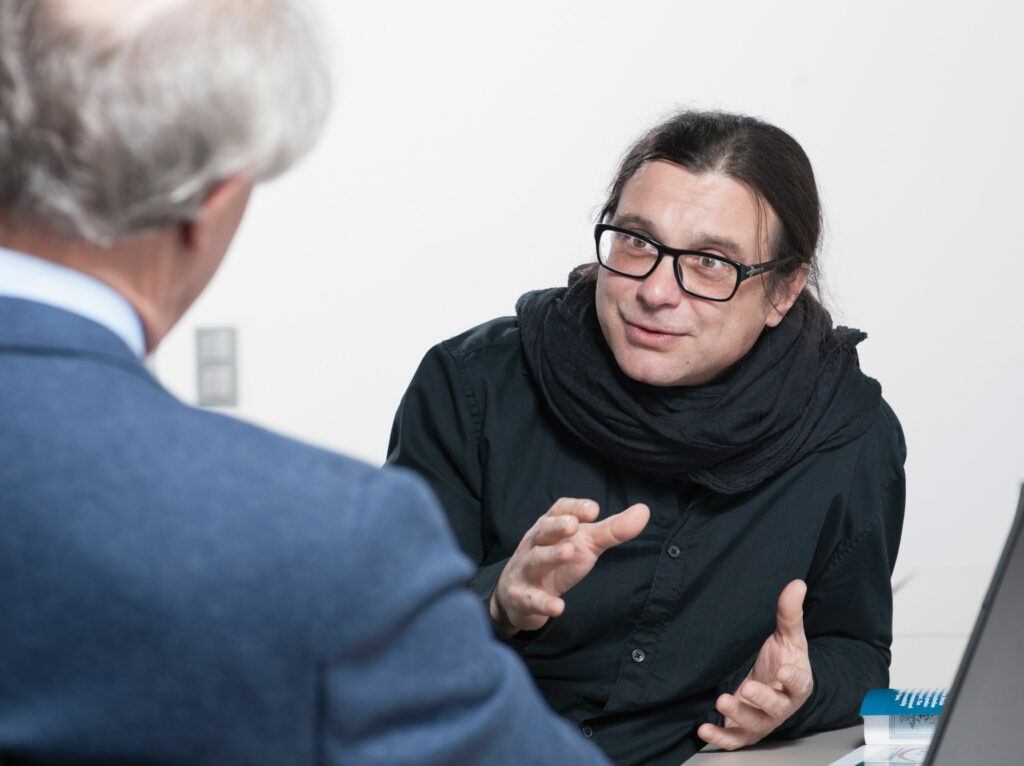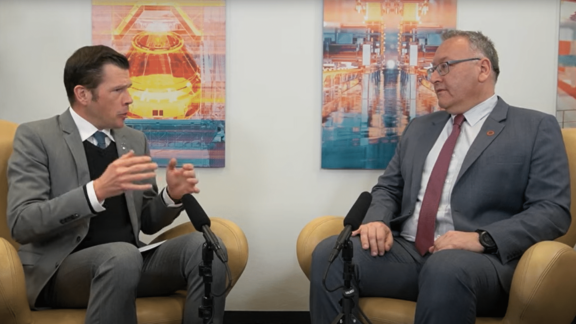This post is also available in: 简体中文 (Chinese (Simplified))
Michael Badics is the driving force behind new developments at the Solutions division of Ars Electronica, an Austrian-based center of innovation focused on implementing radical presentation and media technology. In this insightful dialogue with Metals Magazine editor Dr. Lawrence Gould, Badics describes how his creative team is preparing a futuristic and highly interactive exhibition for Primetals Technologies at METEC 2015. In addition to highlighting some of Ars Electronica’s amazing achievements in the past, he also provides a glimpse of several visionary developments now underway.

What developments and solutions from Ars Electronica could be of potential interest and benefit for metals producers?
Michael Badics: We help businesses to improve their external and internal communications. This is done by visualizing a company’s ideas and by making the ideas interactive for their clients and employees. Our work helps to improve the understanding of what a particular company does and offers. This also applies to the steel industry where we can implement new and completely different visualization techniques for technologies and technological processes.
Ars Electronica is supporting Primetals Technologies at METEC 2015 with the company’s futuristic exhibition area. What are the goals and what impressions are you trying to create?
Michael Badics: We want to create a fantastic impression of the world of Primetals Technologies, showing the processes and the unbelievable scope of products. The goal is to underline the USPs [unique selling propositions] of the company. By creating a balance between the playful or interactive elements and the technology, we demonstrate what your company is all about and what it stands for.
We at Primetals Technologies were quite proud that our customer magazine Metals Magazine recently included an augmented-reality topic for the first time in a Siemens magazine and perhaps for the first time ever in a metallurgical journal. When I showed the article to my son Paul, he said, “C’mon Dad, when I worked as an Arc Electronica guide ten years ago, they were already developing augmented reality.” So what new media tools are now underway at Ars Electronica that we may be publishing in future issues of our magazine?
Michael Badics: What goes on here at Ars Electronica is unique in the world. This is due to the intensive interaction between our Futurelab and Solutions divisions, cooperation with universities around the world, the Ars Electronica festival that attracted some 100,000 visitors in 2014, and the Prix Ars Electronica contest that is held each year. During the 2014 contest, for example, some 4,000 ideas were submitted by thousands of artists and technologists from all over the world that cover nearly the complete spectrum of technological fields. The synergy effect resulting from this unbelievable worldwide network is immense and it helps us to optimize developments in a certain direction and to spotlight the ideas of tomorrow.
I was told that the activities and developments going on at Ars Electronica are something that is truly unique in Austria, perhaps even in Europe. Is this true?
Michael Badics: In fact, we were already involved with augmented reality in 2002 or 2003. At that time, there were screens that you could carry around to visualize a room in different perspectives. Virtual reality was a key topic at Ars Electronica back in 1996. We applied the first 3-D “cave” for the public in the same year. Maybe in one of the soon-to-be published issues of your magazine, we may be able to see what is called E-Paper displays. With this technology, a video or animation automatically starts by simply opening the page. We can already make invitation cards that show a short video clip when the card is opened.

Do you cooperate with other centers or think tanks in the development of new media tools?
Michael Badics: In Austria, we closely work together with the Softwarepark Hagenberg – Austria’s Silicon Hill – JKU [Johannes Kepler University], and the Linz Kunst-Uni [The University of Art and Design Linz]. There are worldwide activities going on that include PhD programs, in-residence artists and scientists, and intensive cooperation with Japan. This is underlined by the fact that our website is also in Japanese. In general, we find that the Japanese are far more open than the Europeans for digital art and to applying new technologies.
Creativity. What generates it at Ars Electronica? I’m sure you guys don’t sit around doing yoga and chanting waiting for some burst of inspiration to come.
Michael Badics: Our sources of inspiration come from two directions. The first one is our team. Our people include computer specialists, game designers, contour scientists and sociologists. The staff members also come from completely different backgrounds and cultures that include Eastern European, Japanese, American and others. This is very important. Through this diversity, new ideas are generated within the group, which individual people would not have. Secondly, as already mentioned, our immense international networking and the continuous exposure to new ideas is the perfect stage for the generation of innovative concepts and developments. We also have here a very flexible and open system that fosters creativity.
With big data, augmented reality and ever-present touchscreens, it seems that science fiction has become part of the mainstream. According to Time Magazine (Issue 6/Feb. 9, 2015), which quoted the Edelman Trust Barometer report (2015), the majority of people feel that these developments are moving far too fast and that not enough thinking is being done about the possible consequences. How do you evaluate these developments?
Michael Badics: This is a fundamental question. It is not only true for most people, it applies to everyone. No one can foresee what impact these developments will have on people one year from now. And the spiral is accelerating beyond belief. The purpose of the Ars Electronica museum and festival is therefore to make these technologies known and to help people better understand them and recognize the impact they may have on their lives. Big brother is not just watching. He already knows.
What “Area-51”-type* super-secret projects are now underway at Ars Electronica that you perhaps would like to reveal for the first time ever to some 10,000 readers of Metals Magazine?
Michael Badics: Well, we have a lot of secret R&D projects going on which we are not allowed to discuss at this time. But I can say that we are involved with future technologies dealing with communication between machines, and not just between people and machines. We expect that brain interfacing will come around in five to ten years, which will become a widely applied communication technology that will help people in their everyday lives. This means that one day someone will be able to turn on a radio just by thoughts. But again, it is extremely important that we have to think about the potential consequences and misuse of such technologies.
Finally, is there anything else that you would like to say?
Yes, in my earlier days I worked in the steel industry for around one and a half years. I’ll never forget watching an operator looking through a glass at liquid steel. He was able to roughly determine the steel composition and how much more of which additives were still needed to obtain a certain quality. This is the human touch – the result of a lifetime of experience. Let me emphasize this: that with all of these futuristic developments, it is the human factor that must always remain as the central element.
More information about the activities and far-reaching developments of Ars Electronica, including its Solutions division, is available at www.aec.at.
*Area 51 is a top-secret U.S. military installation located in southern Nevada that the CIA only publicly acknowledged for the first time in July 2013. Due to the intense secrecy surrounding the base, it was often the subject of conspiracy theories and unidentified flying object (UFO) rumors.


